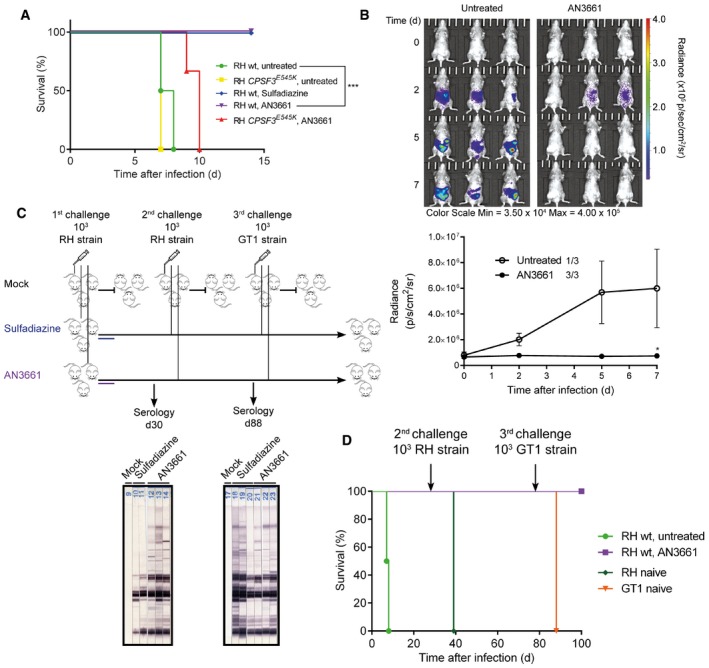Acute toxoplasmosis. Survival curves of CBA/JRj mice infected intraperitoneally with 103 tachyzoites of type I RH wild‐type (wt) or TgCPSF3
E545K mutant strains. Mice were treated orally with 20 mg/kg AN3661 or 200 mg/kg sulphadiazine once daily beginning 1 day post‐infection (three independent experiments, each with three mice per experimental group. A similar scheme is indicated in the flow diagram in (C).
Chronic toxoplasmosis. CBA/JRj mice were infected intraperitoneally with luciferase expressing type II T. gondii (76K strain) (three animals per group for each experiment). Mice were treated with AN3661 as in (A). The top panel depicts live‐animal imaging analysis of treated and control animals. The lower panel shows average whole‐animal radiance in untreated mice (1/3) or treated mice (3/3) that survived from 0 to 7 days post‐infection. Error bars represent mean ± SEM.
Flow diagram used to study the immunity to Toxoplasma and the serological status of mice. Untreated mice succumbed to infection, and thus new groups of healthy CBA/JRj mice (N = 3, naïve) were used for the challenges with RH and GT1 strains. The serological status was determined by immunoblot analysis of sera harvested at the indicated time points.
Survival curves of the CBA/JRj mice challenged with RH strain after the primary infection with RH strain shown in (A), and challenged a third time with the GT1 strain as indicated in (C).
Data information: In (A), significance was tested using log‐rank (Mantel–Cox) test (***
P‐value = 0.0009) and Gehan–Breslow–Wilcoxon test (
P‐value = 0.0015). In (B, lower panel), significance was assessed by unpaired Student's
t‐test (*
P = 0.020).

